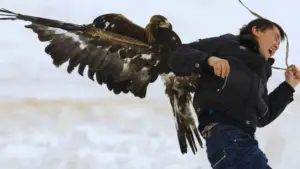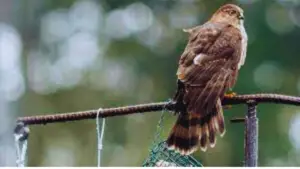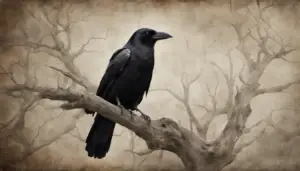Can peacocks fly? While these birds are not known for their long-distance flying abilities, they can fly short distances, usually to escape predators or to reach a high perch.
Peacocks are renowned for their striking beauty and majestic appearance. They are also known for their impressive displays of feathers during courtship rituals. But one question that often arises is whether peacocks can fly. In this article, we will explore the flight capabilities of these birds and the amazing adaptations that allow them to soar through the air.
Many people believe that peacocks are unable to fly due to their large size and weight. However, this is not entirely true. Peacocks are capable of achieving sustained flight over short distances, and can even reach great heights when necessary. Let’s take a closer look at the anatomy and flight mechanics of these amazing birds.
The Anatomy and Wing Structure of Peacocks
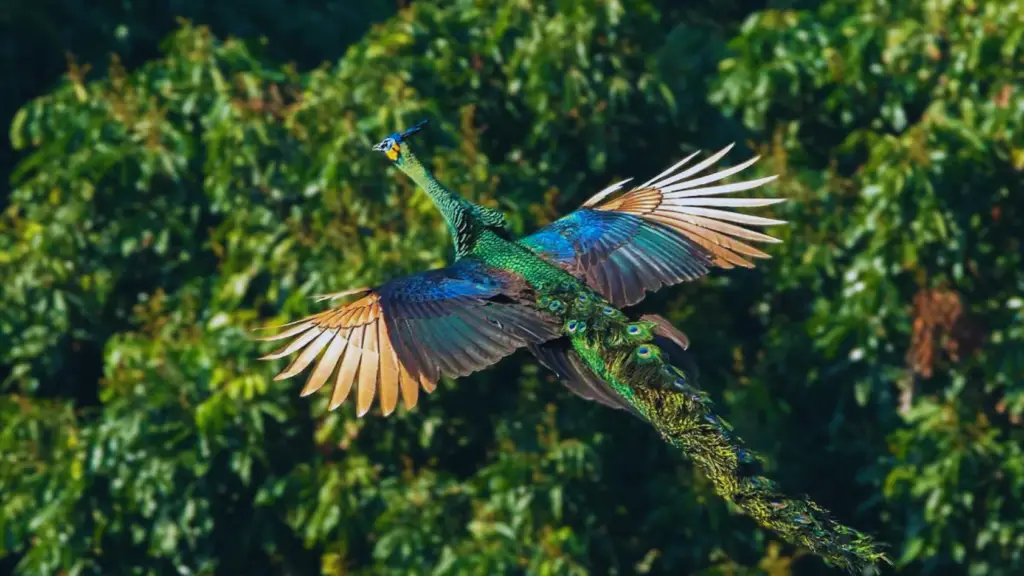
Peacocks are known for their stunning plumage, but their wings are just as remarkable. In fact, peacock wings are specifically adapted for flight, allowing them to achieve impressive aerial maneuvers.
The average peacock has a wingspan of between 5 and 6 feet, which is essential for sustaining flight. Their wings are also characterized by a unique structure that enables them to generate lift and stay airborne for extended periods.
| Characteristic | Description |
|---|---|
| Wing Feathers | Peacock feathers are designed to minimize air resistance and maximize lift, with the primary feathers at the end of the wings creating the most lift. |
| Wing Muscles | Peacocks possess a specialized muscle known as the pectoralis muscle, which powers the downstroke of their wings for takeoff and sustained flight. |
| Wing Loading | Peacocks have a relatively low wing loading, meaning their body weight is spread out over a larger surface area, allowing them to generate enough lift to achieve sustained flight. |
In addition to these adaptations, peacock wings are also incredibly lightweight, with hollow bones that reduce the overall weight of the bird while still providing enough support for flight.
Overall, the wing structure and anatomy of peacocks enable them to achieve sustained flight, glide gracefully through the air, and perform impressive aerial displays during courtship and territorial behaviors.
Flight Patterns and Mechanics of Peacocks
Peacocks are known for their majestic flight abilities, which are influenced by their unique wing structure and mechanics. During flight, peacocks exhibit a distinctive gliding behavior, aided by the movement of their wings.
The wings of peacocks are characterized by a complex structure that enables them to fly. Their wings are relatively small in proportion to their body size, with a short primary feather length and a long secondary feather length. This wing structure helps to reduce the bird’s wing loading, allowing it to achieve lift-off from the ground and stay aloft for short periods.
Peacocks also possess a specialized muscle structure that contributes to their aerial locomotion. While they lack the large pectoral muscles required for sustained flight, they have developed unique muscles that allow them to move their wings in a way that enables gliding and short bursts of flight. These muscles are located near the base of the wing, giving peacocks the ability to adjust the angle and orientation of their wings during flight.
The movement of the feathers on a peacock’s wings also contributes to its flight mechanics. The feathers on the trailing edge of the wing move in a circular motion during flight, creating a vortex that produces lift. This mechanism helps peacocks achieve the necessary lift to remain airborne for short periods.
Unique Peacock Flight Behavior
During flight, peacocks exhibit a unique gliding behavior, where they alternate between flapping their wings and gliding through the air. This behavior helps them conserve energy and maintain their altitude while in flight. Peacocks also use their wings to create a distinct sound during flight, which aids in communication and territorial displays.
In addition to their gliding behavior, peacocks also exhibit unique aerial displays during courtship and territorial displays. These displays often involve intricate movements of the wings and tail feathers, showcasing the bird’s flight capabilities as well as its beauty.
The Wingspan and Winged Capabilities of Peacocks
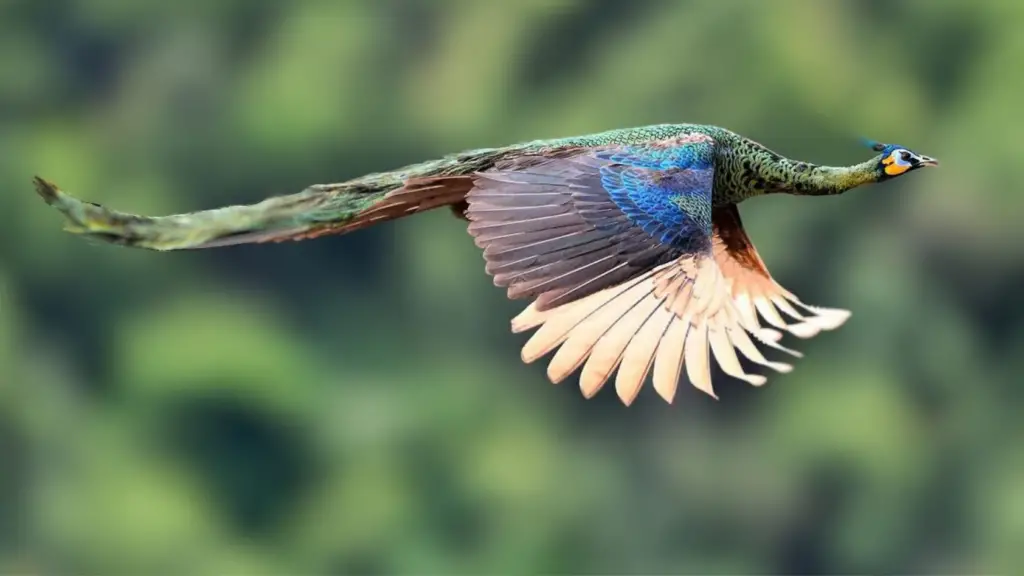
Peacocks are known for their striking appearance, particularly their colorful plumage. But their wingspan and winged capabilities are also impressive. The wingspan of an adult peacock can range from 5 to 6 feet, which is an important factor in their ability to achieve flight.
Peacocks have a unique wing structure that contributes to their ability to fly. Their wings are relatively short and broad, with sturdy feathers that help to generate lift. Additionally, the shape of their wings helps to minimize drag, allowing them to move through the air with greater ease.
Despite their relatively small wings and heavy body weight, peacocks are capable of achieving short bursts of sustained flight. They are able to take off from the ground and fly up to a height of approximately 30 feet. However, they are not able to sustain flight for extended periods like other bird species such as eagles or falcons.
The winged capabilities of peacocks also play a role in their courtship behavior. Male peacocks often use their wings during their elaborate courtship displays, flaunting their colorful feathers to attract a mate. During these displays, the male will spread his tail feathers and fan out his wings, creating an impressive and memorable visual spectacle.
Factors Influencing Peacock Flight
Peacocks have evolved over time to develop unique flight abilities that have helped them navigate their environment and carry out complex social behaviors. Several factors influence the flight capabilities of peacocks, including:
- Evolutionary Adaptations: The development of flight in peacocks is a product of natural selection, where advantageous traits such as wing shape and muscle development were selected over time to promote increased flight capabilities.
- Anatomy and Physiology: The wing structure of peacocks has adapted over time to promote efficient flight, with their feathers and skeleton being modified to contribute to their aerial locomotion capabilities.
- Environmental Conditions: The environment in which peacocks live influences their flight abilities, with factors such as wind speed, humidity, and temperature all playing a role in determining how often and for how long they can fly.
- Behavioral Patterns: Peacocks exhibit unique aerial behaviors during courtship displays and territorial disputes, showcasing their flight capabilities and agility.
Overall, the development of peacock flight is a complex interplay of various factors that continue to shape the flight abilities of these majestic birds.
Peacock Flight Research and Comparative Analysis
Research on peacock flight has been conducted to better understand their aerial capabilities. One study found that peacocks have unique flying behavior, utilizing deep and shallow flapping strokes to generate lift.
In terms of comparative analysis, peacocks are not known for their sustained flight abilities, as their wingspan is not as long as other birds that are known for long-distance flying. However, peacocks are adapted to short bursts of flight, making them efficient fliers for their specific needs.
A comparison of peacock flight to other bird species shows that while they are not among the strongest fliers in the avian world, their aerial displays are unmatched. Their distinctive plumage and elaborate courtship dances make them one of the most fascinating birds to observe in flight.
The Feasibility of Peacocks Flying and Achieving Sustained Flight
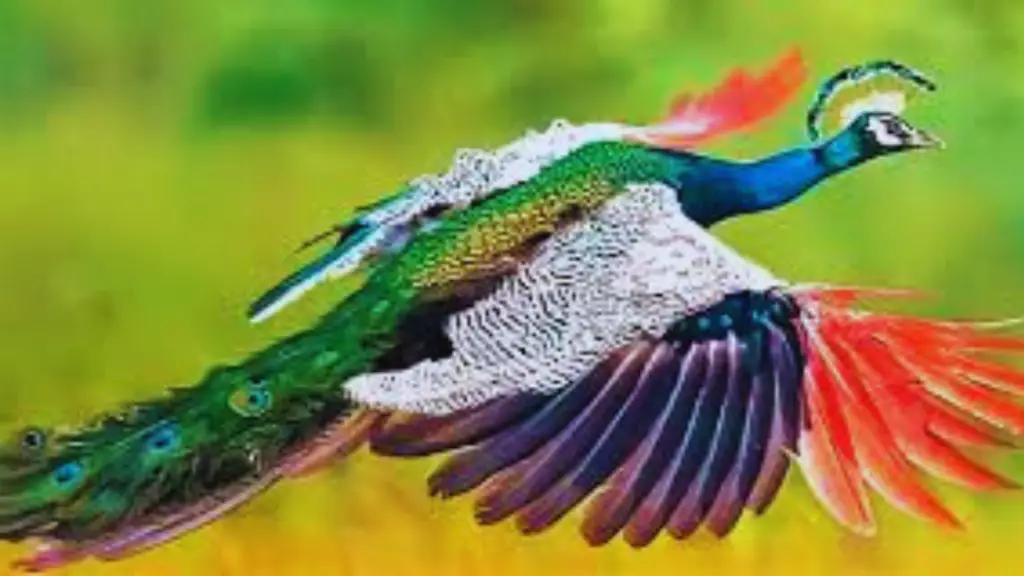
While peacocks are technically capable of flight, their ability to achieve sustained flight is limited.
Peacocks are able to take flight from the ground and can reach great heights, with some reports of them flying up to 50 feet in the air. However, their flights are often short-lived and mainly consist of short bursts of flapping followed by gliding.
This is due to a number of factors, including their large size and heavy weight, as well as their aerodynamic design. Peacocks have relatively small wings in relation to their body size, which makes it difficult for them to generate enough lift to sustain flight for extended periods. Additionally, their wing loading, or the amount of weight they need to lift to achieve flight, is relatively high, making it even more challenging for them to stay airborne.
While peacocks have evolved flight capabilities over time, their primary use of these abilities is for escaping predators and reaching roosting sites. They are not migratory birds and do not fly long distances, as their flight capabilities are best suited for short bursts of flight.
“Peacocks are able to take flight from the ground and can reach great heights, with some reports of them flying up to 50 feet in the air.”
In conclusion, while peacocks are capable of flight, their ability to achieve sustained flight is limited due to their size, weight, and aerodynamic design. Their flight abilities are best suited for short bursts of flight, such as escaping predators or reaching roosting sites.
Peacock Aerial Displays and Behaviors
Peacocks are known for their strikingly beautiful and elaborate courtship displays, which include impressive aerial behaviors. During breeding season, males will spread their wings and perform a series of complex moves while on the ground, before taking to the air to display their prowess to potential mates.
Once airborne, peacocks can execute a range of aerial maneuvers, including slow gliding descents, sudden stalls and turns, and rapid flapping flights that take them great distances. These aerial displays are not only visually stunning, but also serve as a way for males to establish dominance and claim territory.
Interestingly, research has shown that peacock aerial displays are not all about attracting a mate or asserting dominance. Some displays are actually used as a form of defense against predators, with the birds using their impressive aerial abilities to evade and confuse potential attackers.
Overall, the aerial displays and behaviors of peacocks are truly a sight to behold. Their ability to execute complex aerial maneuvers and display stunning physical prowess is a testament to the incredible flight capabilities of these majestic birds.
Can Peacocks Fly FAQ
Peacocks are known for their stunning colors and ornate displays, but many people wonder if they have the ability to fly. Here are answers to some frequently asked questions about peacock flight:
- Do peacocks have the ability to fly?
Yes, peacocks have the ability to fly. However, their flight capabilities are limited compared to other bird species. - Can peacocks soar in the sky?
Peacocks are not known for soaring in the sky. They are more likely to fly short distances while staying close to the ground. - Can peacocks take off from the ground?
Yes, peacocks can take off from the ground. However, their takeoff distance is longer compared to other bird species due to their heavy body weight. - Can peacocks reach great heights in flight?
Peacocks are not known for reaching great heights in flight. They are more likely to fly at low heights while navigating through trees and bushes. - Can peacocks fly long distances?
Peacocks are not built for long-distance flight. They are more likely to fly short distances while looking for food or escaping danger.
Overall, while peacocks do have the ability to fly, their flight capabilities are limited and they are not known for long-distance or high-altitude flights.
Conclusion
Despite their reputation as ground-dwelling beauties, peacocks possess remarkable flight capabilities that allow them to soar through the sky with grace and agility. Through research and analysis of their anatomy, winged adaptations, flight patterns, and behavior, we have gained a deeper understanding of their aerial locomotion and the unique characteristics of their flight.
While peacocks may not be able to achieve sustained flight or cover long distances, they possess the innate ability to take off from the ground and achieve impressive heights in flight. Their intricate wing structures and adaptations, including their aerodynamic feathers and flight muscles, enable them to glide and maneuver through the air with ease.
Furthermore, the evolution of peacock flight has been influenced by a variety of factors, including environmental and social pressures. Their flight behavior also plays a significant role in their courtship and territorial displays, adding to their allure and mystique.
By answering frequently asked questions and providing a comparative analysis of their flight abilities, we hope to have shed light on the fascinating world of peacock flight. From their breathtaking aerial displays to their impressive physical adaptations, peacocks continue to captivate and awe us with their majestic flight capabilities.



